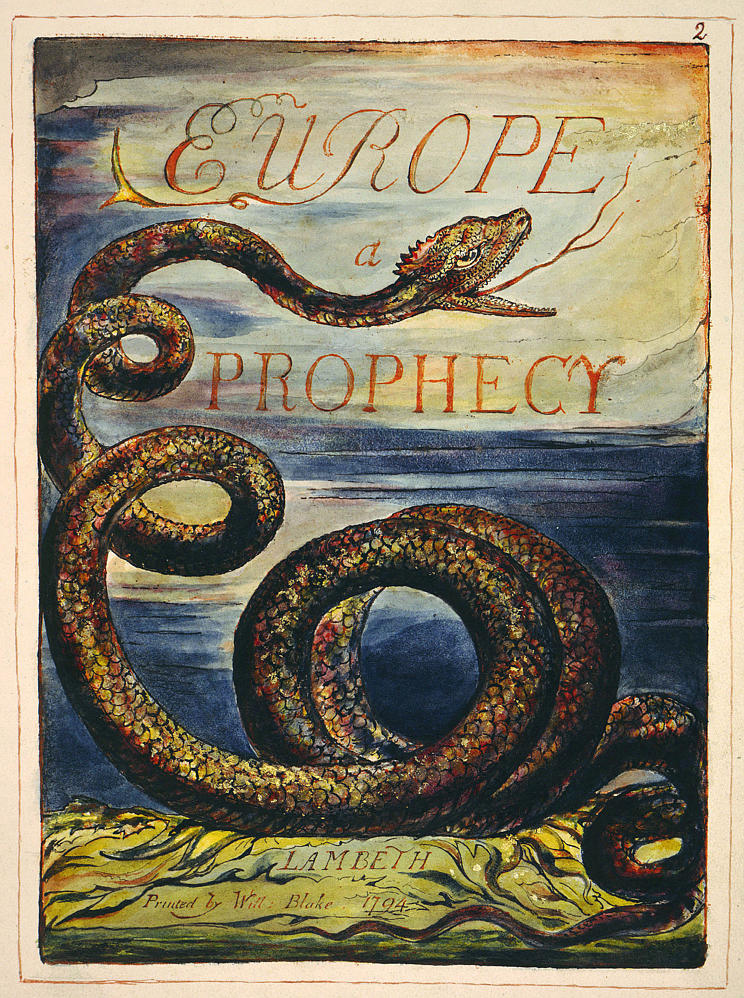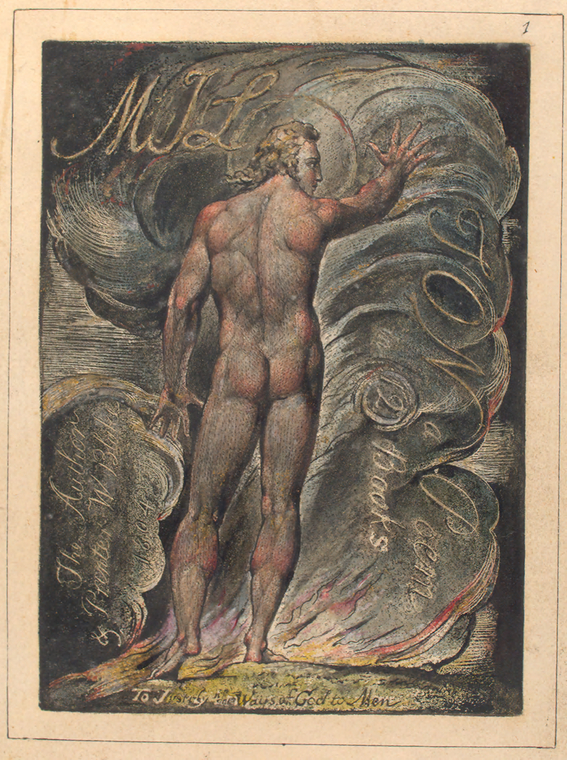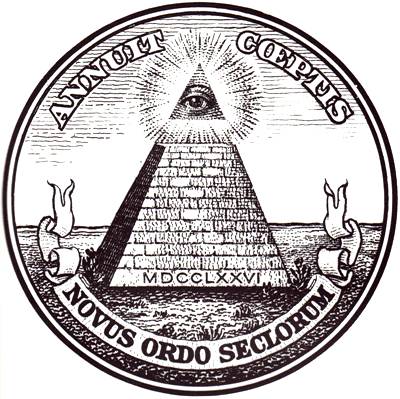Nothing interested Blake more than the relationship of man and God. One way he saw his purpose in life was to 'open the minds of men to a perception of the Infinite'. Because he knew that religion was supposed to serve that purpose for man, he was appalled by false religions which separated God from man, and man from man.
False religions he recognized as taking many forms. Here are some:
Creating individual requirements and forcing them on others;
Milton, Plate 11 (E103)
"Where Satan making to himself Laws from his own identity.
Compell'd others to serve him in moral gratitude & submission
Being call'd God: setting himself above all that is called God."
Naming behaviors sin and devising punishments;
Milton, Plate 9 (E102)
"He created Seven deadly
Sins drawing out his infernal scroll,
Of Moral laws and cruel punishments upon the clouds of Jehovah
To pervert the Divine voice in its entrance to the earth
With thunder of war & trumpets sound, with armies of disease
Punisbments & deaths musterd & number'd; Saying I am God alone
There is no other! let all obey my principles of moral individuality"
Using religion to confine perception to that of the senses;
Song of Los, Plate 4, (E 68)
"Thus the terrible race of Los & Enitharmon gave
Laws & Religions to the sons of Har binding them more
And more to Earth: closing and restraining:
Till a Philosophy of Five Senses was complete
Urizen wept & gave it into the hands of Newton & Locke"
Assuming the role of intermediary between God and man through secrecy;
Urizen, Plate 2, (E 70)
"Of the primeval Priests assum'd power,
When Eternals spurn'd back his religion;
And gave him a place in the north,
Obscure, shadowy, void, solitary."
Creating terror, despair and cruelty through self-righteousness;
Milton, Plate 22, (E 116)
"Miltons Religion is the cause: there is no end to destruction!
Seeing the Churches at their Period in terror & despair:
...
Asserting the Self-righteousness against the Universal Saviour,
Mocking the Confessors & Martyrs, claiming Self-righteousness;
With cruel Virtue: making War upon the Lambs Redeemed;
To perpetuate War & Glory. to perpetuate the Laws of Sin:"
Forbidding the joys that flow from following God;
Jerusalem, Plate 9, (E 151)
"Every Emanative joy forbidden as a Crime:
And the Emanations buried alive in the earth with pomp of religion:
Inspiration deny'd; Genius forbidden by laws of punishment:
I saw terrified;"
Creating a mask that obscures the true relationship of man and God;
Jerusalem, Plate 38, (E 184)
"A pretence of Art, to destroy Art: a pretence of Liberty
To destroy Liberty. a pretence of Religion to destroy Religion"
Allowing consciousness of of sin to obscure consciousness of the spirit;
Jerusalem, Plate 41, (E 188)
"Alas!--The time will come, when a mans worst enemies
Shall be those of his own house and family: in a Religion
Of Generation, to destroy by Sin and Atonement, happy Jerusalem,
The Bride and Wife of the Lamb. O God thou art Not an Avenger!"
Worshiping Satan instead of God;
Jerusalem, Plate 52, (E 200)
"Will any one say: Where are those who worship Satan under the
Name of God! Where are they? Listen! Every Religion that Preaches
Vengeance for Sins the Religion of the Enemy & Avenger; and not
the Forgiver of Sin, and their God is Satan, Named by the Divine
Name Your Religion O Deists: Deism, is the Worship of the God
of this World by the means of what you call Natural Religion and
Natural Philosophy, and of Natural Morality or
Self-Righteousness, the Selfish Virtues of the Natural Heart.
This was the Religion of the Pharisees who murderd Jesus. Deism
is the same & ends in the same."
Imposing chastity which divides man from woman;
Jerusalem, Plate 69, (E 222)
"A Religion of Chastity, forming a Commerce to sell Loves
With Moral Law, an Equal Balance, not going down with decision
Therefore the Male severe & cruel filld with stern
Revenge:
Mutual Hate returns & mutual Deceit & mutual Fear."
Bringing hate and destruction under the guise of religion;
Jerusalem, Plate 77, (E 231)
"I stood among my valleys of the south
And saw a flame of fire, even as a Wheel
Of fire surrounding all the heavens: it went
From west to cast against the current of
Creation and devourd all things in its loud
Fury & thundering course round heaven & earth
...
And I asked a Watcher & a Holy-One
Its Name? he answerd. It is the Wheel of Religion"
Making a concise statement about the nature of true religion, Carl Jung had this to say:
"The religious attitude is quite different from faith associated with a specific creed. The latter, as a codified and dogmatized form of an original religious experience, simply gives expression to a particular collective belief. True religion involves a subjective relationship to certain metaphysical, extramundane factors."
Carl Jung, The Undiscovered Self, Complete Works, Vol. 10, par. 507
.jpg) |
|
God Answers Job out of the Whirlwind | | | |















.jpg)